Let’s make fresh Kakimochi at home with this Japanese Rice Cracker recipe. Flavored with salt, soy sauce, or furikake seasoning, this crunchy and savory snack really hits the spot. Perfect to enjoy with a cup of hot green tea.
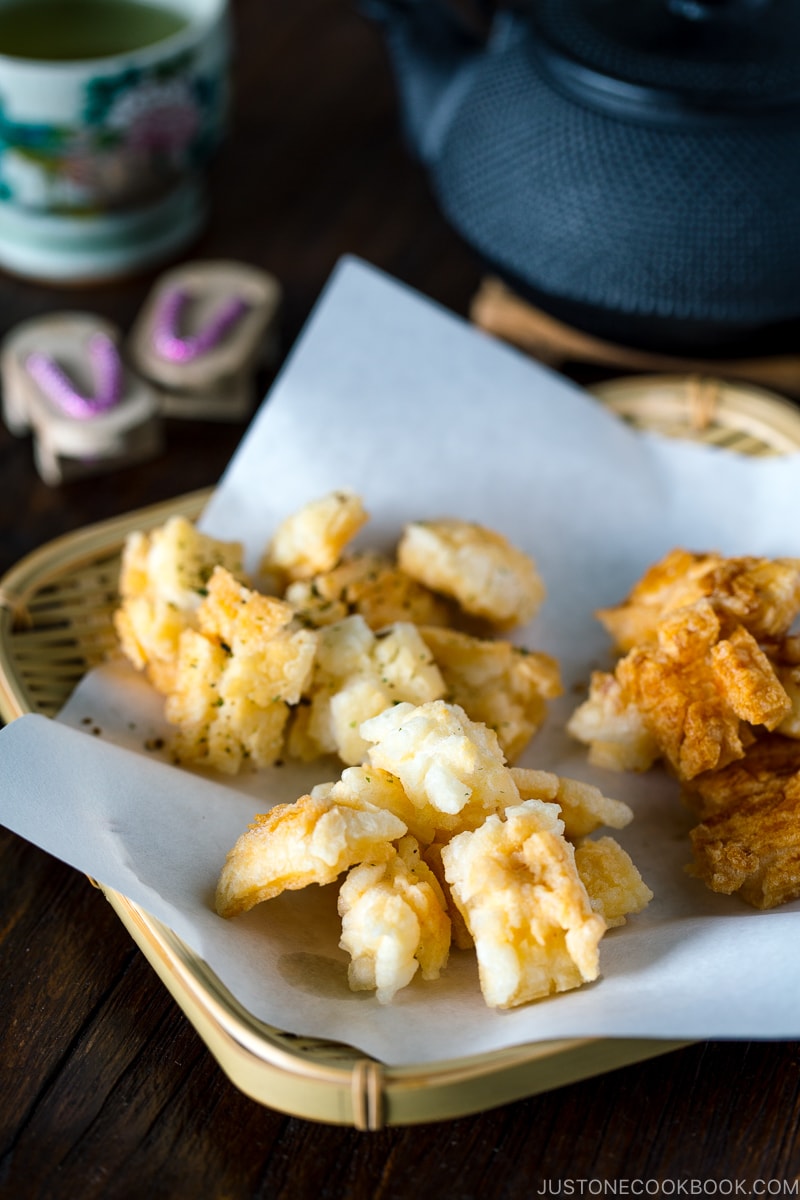
The Japanese New Year celebration was over a few months ago. If you still have leftover rice cakes in your pantry or freezer and you’re not sure what to do with them, here’s a great solution. I’ll show you a quick and easy homemade rice cracker recipe.
If you are an all-year-round mochi eater like me, don’t forget to check out my favorite mochi recipes at the end of this post!
Homemade Rice Cracker Recipe
Rice crackers are a common snack in Asia where rice is the key staple food. In Japan, there are two types of rice crackers: Senbei and Okaki.
Senbei vs. Okaki
Senbei (煎餅) or Osenbei (お煎餅) are rice crackers made of rice (うるち米). The origin of senbei is actually China. The Chinese rice crackers that were brought to Japan during Heian Period (789-1185) were made with flour (technically “flour crackers”). However, the Japanese loved rice so much that they started making crackers with rice instead. That’s how senbei started to become popular in Japan.
Okaki (おかき) are rice crackers made of sweet rice/glutinous rice (もち米). We call smaller size okaki Arare (あられ). Just like senbei, okaki has been around since Heian Period. People didn’t want to toss the mochi used for New Year’s decoration (Kagami Mochi), so they scraped the mochi into smaller pieces with their hands, dried them, and deep-fried them to enjoy the leftover mochi. You might notice that I said, “scraped the mochi with my hands.” Why hands, you might ask? In Samurai’s house, using cutlery at the beginning of the new year was considered bad luck, so people used their hands to scrape the big mochi into smaller pieces, instead of using a knife.
Different Sizes, Shapes & Flavors for Rice Crackers
Rice crackers come in various sizes, shapes (squares, rectangular, round, ball), and flavors (usually savory but sometimes sweet). There are several ways to make them: you can bake, grill (traditionally over charcoal), or deep-fry.
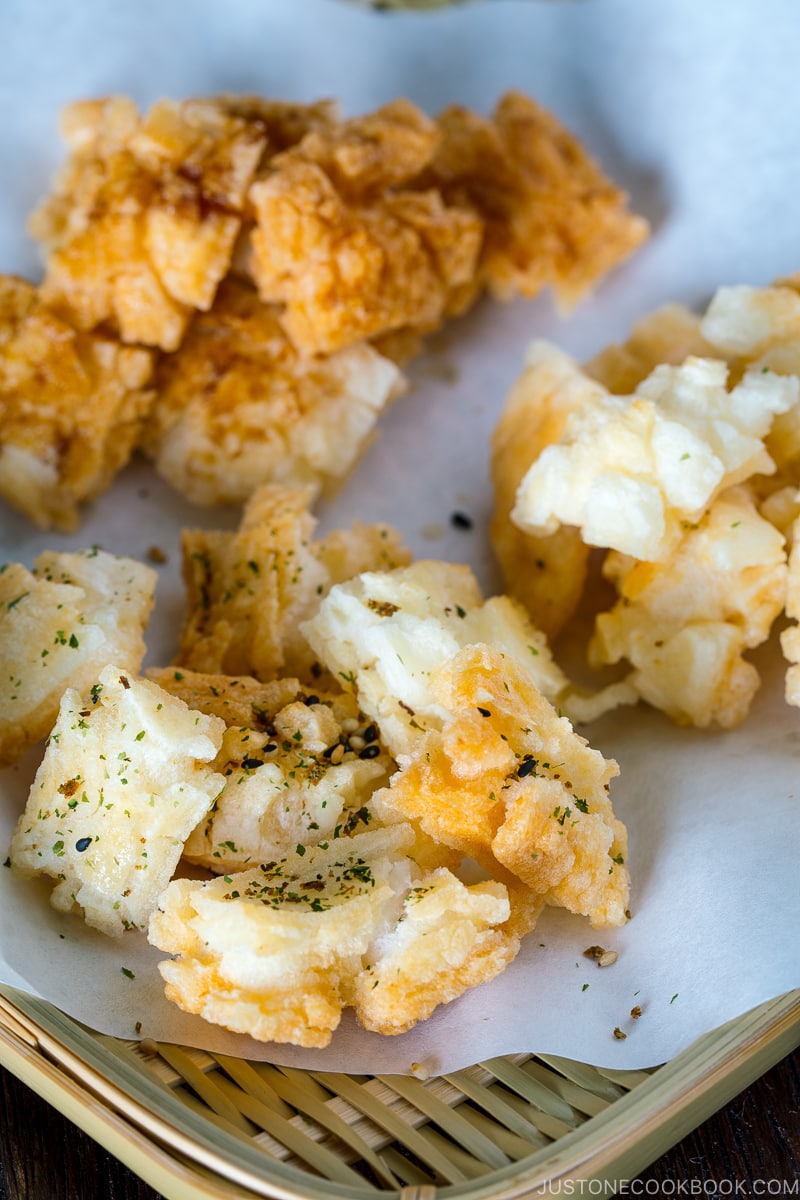
Kakimochi (かき餅) – Japanese Rice Cracker Recipe
For today’s rice cracker recipe, we will use mochi (sweet rice/glutinous rice); therefore, this is a type of Okaki instead of Senbei. This particular Okaki is called Kakimochi (かき餅) in Japanese.
The process to make Kakimochi at home is very easy. You just need to cut mochi into thin slices, air-dry them completely until the moisture is removed, then break into small pieces and deep-fry them.
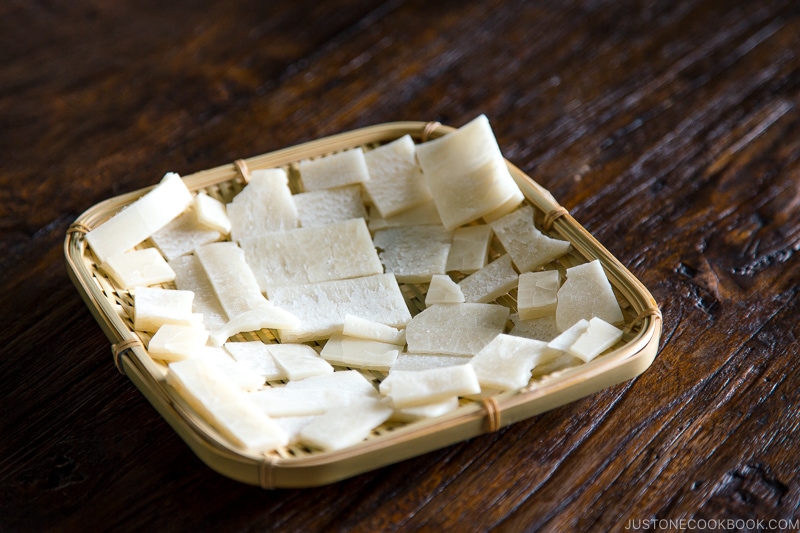
The dried mochi pieces will puff up like popcorn while deep-frying in oil. Immediately after frying, season Kakimochi with your favorite flavors: salt, soy sauce, Furikake, Shichimi Togarashi, or even curry powder!
Although Kakimochi can be purchased easily at grocery stores in Japan, homemade ones are still the best! They are light and super crunchy. I like to enjoy them with green tea for my afternoon snack when I crave something savory. With their adorable shapes, I think these rice crackers make a fun snack for parties too.
I hope you enjoy making this homemade rice cracker recipe. If you try it, don’t forget to share your picture on Instagram, Facebook, or Twitter with #JustOneCookbook. Thank you so much for reading, and till next time!
Other Recipes Using Japanese Rice Cake
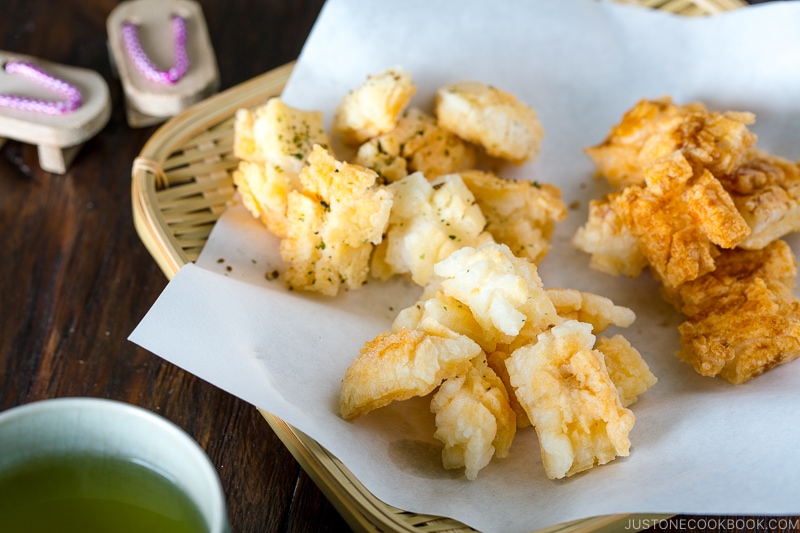
Wish to learn more about Japanese cooking? Sign up for our free newsletter to receive cooking tips & recipe updates! And stay in touch with me on Facebook, Pinterest, YouTube, and Instagram.
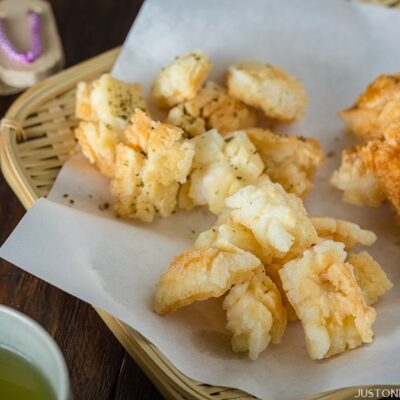
Homemade Rice Crackers (Kakimochi)
Ingredients
- 4 Japanese rice cakes (mochi) (I use dried rectangular rice cakes called kirimochi)
- neutral oil
For the Seasoning Options
- Diamond Crystal kosher salt (I used Himalayan Pink Salt)
- furikake (rice seasoning) (you can make homemade Japanese Rice Seasoning)
- soy sauce
Instructions
- Gather all the ingredients.

To Dry the Mochi (7–10 Days Before Frying)
- Use a knife to cut 4 Japanese rice cakes (mochi) into small pieces about ⅛ inch (3 mm) thick. If your mochi is dried and hard, cut it with the heel of your knife; wedge the knife edge into the mochi and use your non-dominant hand to push the blade down to cut through. Next, lay the mochi pieces in a single layer on a flat tray or wire rack. Here, I use a Japanese bamboo strainer called bonzaru.

- Air-dry them with good ventilation for at least one week. As mochi pieces dehydrate, they might break into smaller pieces, so try not to touch them. The mochi pieces will harden and look cracked and flaky on the surface,

- Another option: I haven‘t tried this method, but I‘ve read that you can bake the mochi pieces at 400ºF (200ºC) for 15 minutes instead of air-drying them. For a convection oven, reduce the cooking temperature by 25ºF (15ºC). You can lightly brush them with oil and season with salt (so the salt will stick to the mochi pieces).
To Fry the Rice Crackers
- In a frying pan (I use a cast iron skillet), add neutral oil to a depth of ¾ inch (2 cm). Turn the heat to medium and heat the oil to 340ºF (170ºC); I recommend an instant-read cooking thermometer to monitor the temperature. When it's hot enough, add just a few mochi pieces at first. If small bubbles start to appear around the mochi, then add more pieces in a single layer, leaving space between them so they can pop and expand. Do not overcrowd the skillet. Tip: If you‘re new to deep-frying, see my post How to Deep-Fry Food at Home for helpful tips.

- The mochi pieces will turn white and start to puff up. Turn over each piece and fry until puffed and lightly golden brown. Then, increase the heat so the oil is 350ºF (180ºC) and fry until the mochi pieces are golden brown.

- Remove the kakimochi from the oil and place on a wire rack or a plate lined with paper towels. While they are hot, season with Diamond Crystal kosher salt.

- Optionally, you can sprinkle them with furikake (rice seasoning) or brush soy sauce on top, reducing the amount of salt if you use soy sauce.

To Serve and Store
- Enjoy the Kakimochi immediately. It‘s best to consume them on the same day. Once cooled, you can also put them in an airtight container and store them at room temperature for a few days.
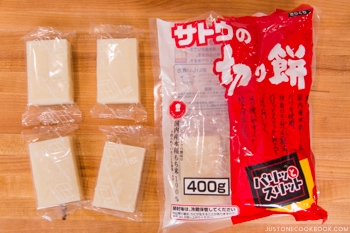
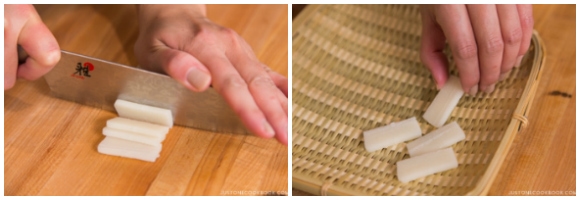
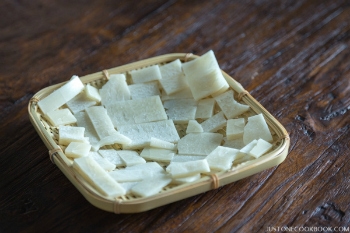
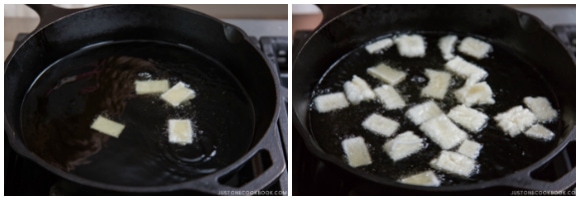
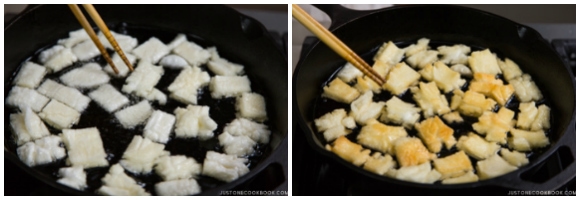
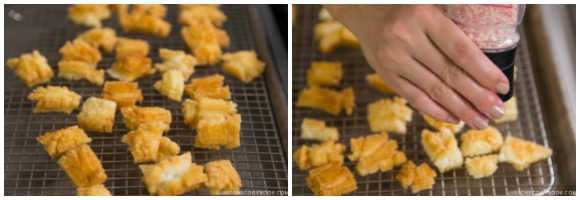
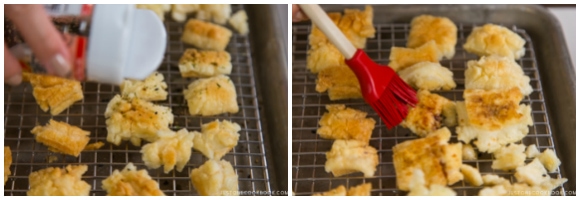










I’m thinking of using my food dehydrator to dry out the mochi. Anyone else tried it?
Hi Amy, There are freeze-dried Mochi available, however, we’re not sure how the outcome will be after using a food dehydrator.
If you try it, please let us know how it goes!